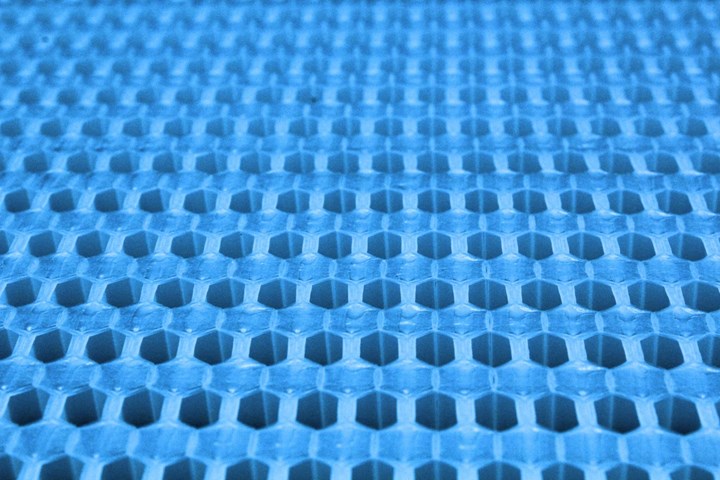AZL, EconCore, Audi partner to develop composite battery casings
A new project aims to identify potential opportunities and challenges for composite materials within the electric vehicle battery enclosure market.

Thermoplastic honeycomb specialist EconCore (Leuven, Belgium) announced on Nov. 23 a partnership involving AZL Aachen (Aachen, Germany), Audi (Ingolstadt, Germany) and others to establish the potential of using composites for battery housings. This eight-month collaborative project will assess the technical challenges, opportunities and benefits of developing battery casings for electric vehicles using a variety of materials, including thermoplastics.
The project has been established by industry network group AZL, which specializes in composites-based lightweight technologies and seeks to drive innovation though sharing knowledge.
EconCore cites reports from Statista and MarketsandMarkets, which project that the global battery housing market for electric vehicles will experience a growth rate of more than 13% across the next seven years. The partnership sees much potential for composites within this market, as electric vehicle OEMs aim to increase vehicle operating range through weight reduction, without compromising on strength and quality.
The first phase of this project will be focused on understanding what the potential opportunities and challenges are. For the EconCore team, this means pre-selecting thermoplastic materials, using different composite skin layers and working through different geometrical design variants, to optimize the honeycomb material to obtain desirable characteristics and share findings with project partners.
“After successfully establishing the use of the technology in automotive interiors, we feel there is tremendous potential in using composite materials for battery housings, and EconCore is now actively working with Audi and other industrial partners, to explore opportunities and to learn how the thermoplastic honeycomb technology can be applied into this area,” says Tomasz Czarnecki, chief operating officer of EconCore.
He adds: “There’s no doubt there are some interesting opportunities to reduce weight using composite materials. We believe there are even greater potential benefits from using honeycomb sandwich materials, which have incredible strength, while being extremely light, compared to aluminum or steel alternatives.”
EconCore has experience using honeycomb material in vehicle interiors, which can be compression molded to produce three dimensional shapes. If the initial phase goes well, the plan is to progress to a prototyping stage.
“It’s important we don’t get ahead of ourselves. Part of the process is to also understand things like design, material and the likely production costs,” Czarnecki says. “These are also critical factors in addition to the potential lightweighting benefits, that must be assessed. It must make economic sense too. However, we remain optimistic. With our journey through automotive interiors so far, we have seen that that the thermoplastic honeycomb technology delivers opportunities to save costs on both ends, material and conversion.”
Related Content
-
TU Munich develops cuboidal conformable tanks using carbon fiber composites for increased hydrogen storage
Flat tank enabling standard platform for BEV and FCEV uses thermoplastic and thermoset composites, overwrapped skeleton design in pursuit of 25% more H2 storage.
-
Jeep all-composite roof receivers achieve steel performance at low mass
Ultrashort carbon fiber/PPA replaces steel on rooftop brackets to hold Jeep soft tops, hardtops.
-
Plant tour: Airbus, Illescas, Spain
Airbus’ Illescas facility, featuring highly automated composites processes for the A350 lower wing cover and one-piece Section 19 fuselage barrels, works toward production ramp-ups and next-generation aircraft.















